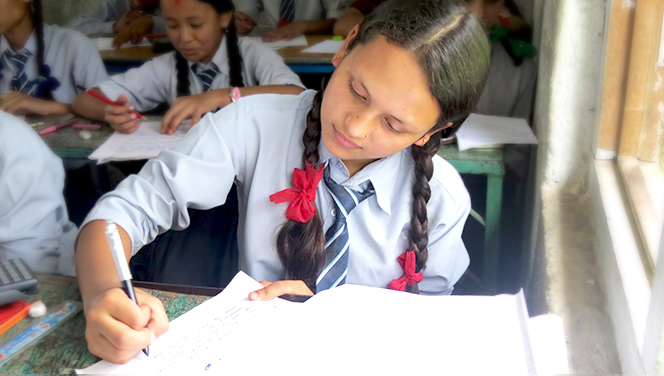Like other countries of the world, COVID-19’s Omicron variant is spreading rapidly across Nepal. Latest figures (January 24) show that Nepal recorded close to 9,000 cases of COVID infection (this number does not include positive cases through Antigen tests). Because of its population density, the spread is highest in the Kathmandu District with an alarming reported 5000 infections per day, which is almost twice the number compared to the second wave (Delta variant wave). Frighteningly, however, the actual number of infected population is said to be much much higher than the official figure because the majority of the population do not get COVID tests.
The COVID situation in the Dakshinkali municipality and its vicinity, where we work, is more or less similar. During the second wave the municipality was also severely affected and there were regular updates from the municipality office concerning the infection and healthcare facilities. Luckily, we do not have any critical updates this time, but the observation at the grassroot level suggests that the Omicron variant is extremely prevalent in the area, and it is difficult to find a family that has not been infected with this variant.
To combat the spread of the infection, as in the past, the government of Nepal has ordered the closing of the schools, gyms, shopping malls, and most of the public facilities. Additionally, gathering of 25 or more people is prohibited, and vehicles are permitted to ply on the street alternatively on an even-odd license number plate basis. Unlike previous waves, the government has decided against a full lockdown, but even this may change during the coming weeks.

(Source: Reuters COVID update January 25)
The weekly average trend of infections is similar to that of the second wave, however, there is a significant difference in that we have far fewer recorded deaths. During the second wave, the average weekly death count was close to 280, but the current average is around 35. This is still far from normal, but we are glad to see that the Omicron variant has been less deadly…so far. Another bit of positive news is that only a minor number of the infected population have needed to be hospitalized, which is a big relief to a health system under immense stress. The government, to give them some credit, has seemed more prepared for this surge by adding more oxygen plants, ICU beds and ventilators. However, the current scenario can change at anytime as the virus continues to spread and potentially mutate. The fear on everyone’s mind is what if the next variant is more infectious and more deadly?
Proper health facilities and equipment are crucial, but public health experts have repeatedly recommended that the most effective way to tackle this is by fully vaccinating all eligible persons and giving booster shots to the vulnerable and frontline workers. So far, Nepal has only fully vaccinated 41 percent of the population and only 54 percent of the population have received at least one dose.

(Source Google Covid vaccine tracker, January 24)
This data shows that less than half of the people have received a full dose of vaccine so far. To accelerate the vaccine rollout, the government announced that all students above the age of 12 will be vaccinated in schools from February 1 through 5 all over Nepal. This campaign is also scheduled in all of our partner schools in Dakshinkali Municipality, and we are glad to see this action being taken. Vaccination is the most effective arsenal to fight the pandemic, so let us hope that the vaccination campaigns, especially aimed for school going children, will be successful so that Rukmini girls and all students can once again attend schools to empower themselves through education.
- Aftermath of 2023 Earthquake and Lending a Helping Hand - November 23, 2023
- Sowing the Seeds of Empowerment through Sewing - July 30, 2023
- Vaccinating students from COVID is the boost we need in Nepal - January 30, 2022
- Re-opening Act: To be or not to be in school in person - September 29, 2021
- A Gasp of Hope in the Fight Against COVID-19 - August 31, 2021

